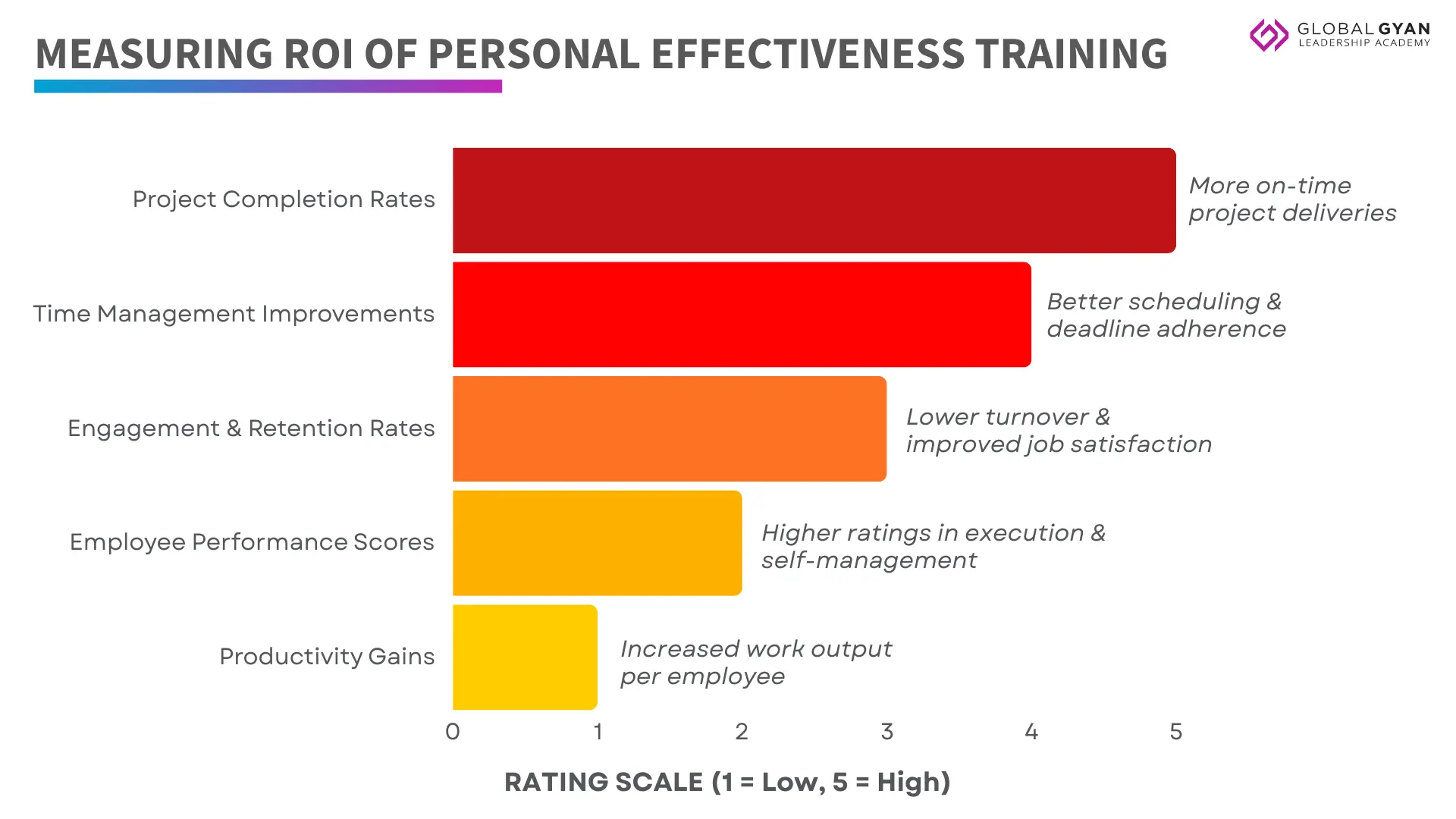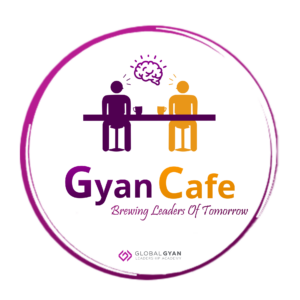Why Personal Effectiveness Training is Essential for a High-Performing Workforce


In a bustling workplace, you’ll normally see employees consistently meeting deadlines, working well in collaboration with each other, and demonstrating strong problem-solving skills. At the same time, you’ll also see teams struggling with inefficiencies, miscommunication, and low motivation. Have you ever thought, what separates the two? Personal effectiveness.
Today, it is common to see many professionals (including yourself) struggle with distractions, unclear priorities, and skill gaps that hinder their productivity. But personal effectiveness ensures that your capabilities are maximized, so as to achieve professional and organizational goals. This is where personal effectiveness training plays a pivotal role in transforming average employees into high-performing individuals, playing active roles in high-performing teams.
Today, a company’s success hinges much less on the quantity of work done by humans as AI and automation are taking over the territory of “lower level” cognitive work. The quality of mental output – of ideas, solutions and innovation—is now key to productivity. Today, efficiency is not about getting things done, but about getting things done well.
– Dr. Mithu Storoni, Eye Surgeon and Neuroscience Researcher-turned-Author
In this article, we explore why personal effectiveness in the workplace is essential & how personal effectiveness training can help organizations build a high-performing workforce that is not just skilled but also proactive, engaged, and growth-oriented.
Resource Corner: Want to raise your personal effectiveness? Explore Our Program
Improving Productivity: How Structured Personal Effectiveness Training Reduces Inefficiencies
Studies have shown that process inefficiencies can cost companies up to as much as 30% of their annual revenues! The same inefficiencies can cost a professional as much as 26% of their workday. Can you imagine, meetings dragging on for no reason, tasks taking longer than necessary to finish, and employees struggling to prioritize their work on a daily basis.
A structured personal effectiveness training program, like those offered by GlobalGyan Leadership Academy, can help cut through these inefficiencies, saving time and cost (in terms of business outcome). Here are some ways in which personal effectiveness training boosts productivity:
- Helps employees prioritize tasks effectively, reducing time wasted on low-impact activities.
- Introduces techniques like time blocking, goal setting, and the Eisenhower Matrix to manage workloads better.
- Enhances communication skills, reducing misunderstandings and unnecessary back-and-forths.
- Encourages proactive problem-solving, ensuring employees take ownership rather than waiting for direction.
Read Also: Top 5 Leadership Training Programs in India
Bridging the Skills Gap: Why Employees Struggle with Focus & Execution
A McKinsey study boldly claims: “Most executives say they frequently find themselves spending way too much time on pointless interactions”. Perhaps, this is one of the reasons why, despite having the technical skills for their roles, professionals, including C-suite executives, struggle with execution—it is down to a lack of personal effectiveness skills.
This includes difficulty in managing time, maintaining focus (the same study vouches for shorter 15-30 minute meetings as opposed to the conventional hour-long ones), and following through on commitments. Here may be a few reasons why employees struggle with personal effectiveness in the workplace:
- Digital Distractions: The constant influx of emails, messages, and notifications makes it hard to concentrate on priority tasks.
- Poor Goal Setting: Many employees don’t break down tasks into achievable milestones. This causes them to get overwhelmed with work.
- Lack of Self-Discipline: Without guidance, employees often procrastinate or multitask ineffectively.
- Ineffective Communication: Misalignment in expectations causes delays and rework. It can also branch out into more mundane tasks to cover.
Personal effectiveness training equip employees with practical frameworks to stay focused, execute efficiently, and complete work with clarity and precision. For instance, listen to white noise or take a short walk around to look at the bigger picture more clearly. These are the types of tips and hacks one can expect to learn in a personal effectiveness training workshop.
Employee Retention & Growth: Upskilled Employees Are More Engaged and Committed
Employee retention is a growing concern for organizations. Several studies have demonstrated a positive correlation between employee retention and organizations that invest in their learning and development. In fact, a recent LinkedIn survey revealed that organizations with a strong learning culture enjoy 57% better retention rate. Do you know how costly it is to hire replacements?
So, here’s how personal effectiveness training can help increase employee engagement & retention:
- Employees feel valued when companies invest in their growth.
- Upskilled employees experience fewer workplace frustrations, reducing burnout.
- Training instils a sense of achievement in a professional, improving their overall job satisfaction.
- Employees who master personal effectiveness skills are more likely to grow into leadership roles, strengthening your leadership pipeline.
All of these, in turn, contribute to a high-performance work culture where high-performing teams & individuals thrive.
Measuring ROI of Personal Effectiveness Training Programs

Training programs are often dismissed as soft investments because their impact is not always measured effectively. However, organizations that track the right metrics can demonstrate the tangible benefits of personal effectiveness training. The five basic metrics that determine this include:
- Productivity Gains – Tracking reduction in wasted time, increased output per employee.
- Employee Performance Scores – Comparing pre- and post-training performance ratings.
- Engagement & Retention Rates – Monitoring employee satisfaction and turnover.
- Time Management Improvements – Assessing meeting efficiency and deadline adherence.
- Project Completion Rates – Evaluating whether employees complete tasks more efficiently.
Companies that embed personal effectiveness training into their L&D strategy consistently see measurable improvements in performance and efficiency.
Promoting a Culture of Continuous Learning: Encouraging Managers to Take Ownership of Personal Growth
A high-performing workforce, with high-performing teams & individuals, doesn’t emerge from occasional training programs—it requires a culture of continuous learning and self-improvement. Managers play a critical role in fostering personal effectiveness in the workplace. Here are a few ways to do that:
- Lead by Example: Demonstrating strong personal effectiveness skills themselves.
- Encourage Self-Reflection: Helping employees assess their productivity habits.
- Provide Ongoing Support: Reinforcing training through mentorship and feedback.
- Create a Growth-Oriented Environment: Recognizing and rewarding improvements in personal effectiveness.
Companies that embed personal effectiveness skills into their leadership framework ensure long-term success by making self-improvement a core competency.
Wrapping Up: Invest in Personal Effectiveness Training
Today, efficiency and agility define business success; and personal effectiveness training is not just a “nice-to-have” but a necessity for organizations that aspire to build high-performing teams. The question is no longer “Should we invest in personal effectiveness training?” but rather, “How soon can we get started?”
Have you answered the question? Let’s start a conversation then. Get in touch with our representative Kajal Motwani (kajal@globalgyan.in) today!
FAQs:
- Why is personal effectiveness important in the workplace?
Personal effectiveness in the workplace enhances productivity, focus, and execution, ensuring high-performing teams achieve goals efficiently with strong personal effectiveness skills.
- Why is training so important for effective performance management?
Personal effectiveness training reduces inefficiencies, bridges skill gaps, and improves engagement, empowering employees to contribute effectively to high-performing teams.
- What is personal effectiveness training?
Personal effectiveness training equips employees with time management, focus, and execution skills, ensuring personal effectiveness in the workplace for better productivity.
- What are the three factors of personal effectiveness?
Personal effectiveness skills include goal setting, time management, and communication—critical for high-performing teams and personal effectiveness in the workplace.



Responses